Last week in Around the Grounds we joined the happy buzz about pollinator gardens springing up everywhere. We know that bees need native flowers for nectar and pollen. Butterflies also need nectar, and they need the host plants their caterpillars eat. So, a good pollinator garden supplies all three resources – nectar, pollen, and host plants. Planting a big variety of native plants is the best way to do that.
However, there are a few special plants that do all three jobs. Top among them is Milkweed (Asclepias spp.). Milkweed, of course, is the only host plant for Monarch butterflies.
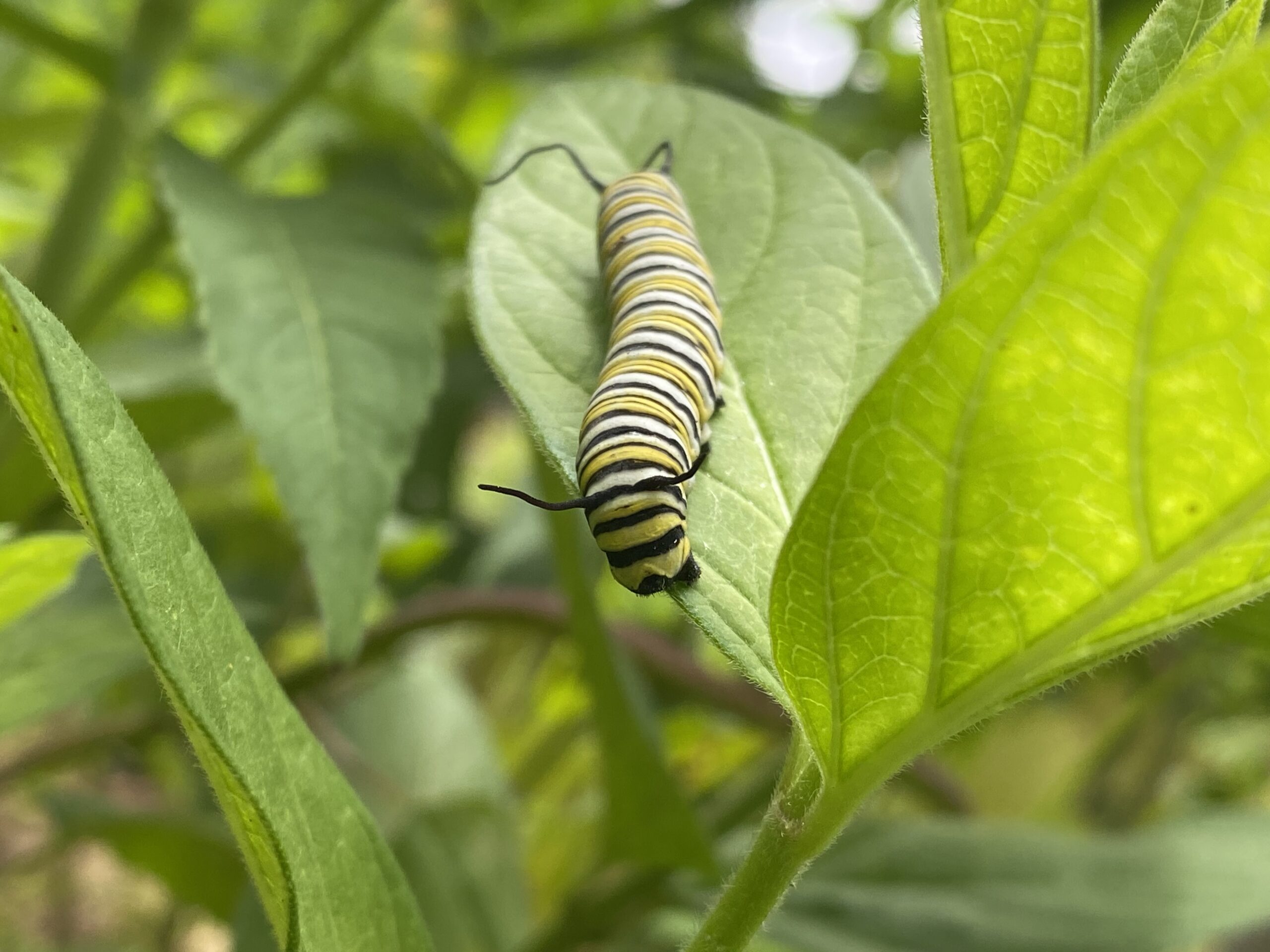
If you go looking for monarch caterpillars on Milkweed, you may discover an entire, complex ecosystem. A research study in Ohio documented 457 different insect species on just one stand of Milkweed! That’s a lot of biodiversity supported by this amazing plant.
In addition to monarchs, Milkweed is the host plant for 11 other species of Lepidoptera (the insect family for moths and butterflies). One of them is the Milkweed tussock moth. Many a gardener has been shocked to discover a mass of little wriggling black caterpillars rapidly devouring their prized Milkweed plants. But before you panic, consider the careful balance nature has designed.
The Milkweed tussock moth arrives later in the season, after most of the Monarch caterpillars already have eaten their fill and turned into butterflies, so there is plenty of Milkweed for everybody. As these little black caterpillars mature, they wander away from the pack and grow from creepy to… sort of cute? But don’t touch them without gloves. Those funny hairs can sting like nettles.
Milkweed tussock moths are important night-pollinators, and their main predator is bats. Astonishingly, they have developed a defensive sonar-type beep that warns bats away from them.
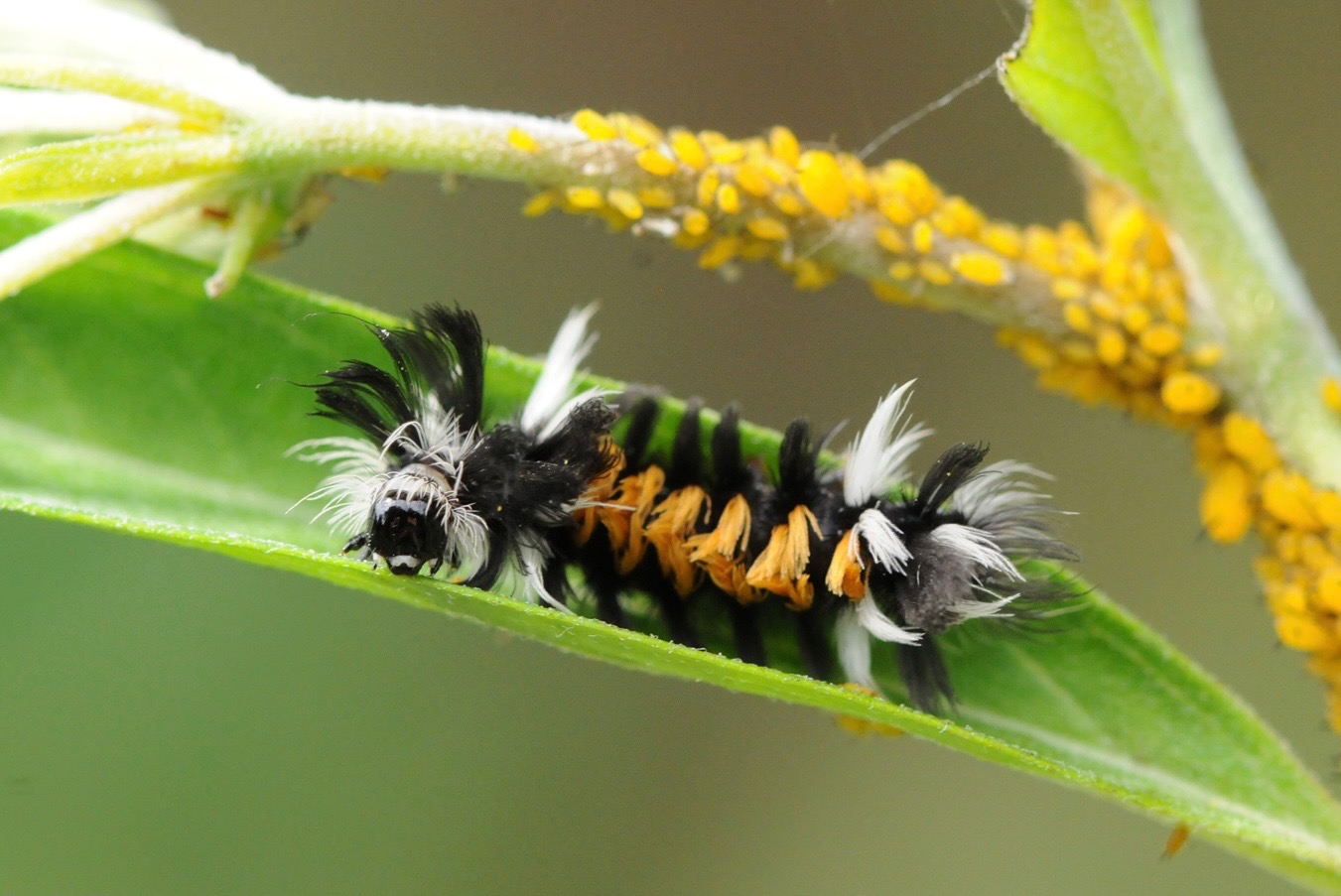
Photo: M.J. Raupp
Another common sight on Milkweed is a large population of Milkweed aphids. You could hose them off, or squish them with your fingers. Or, you could just watch as ladybugs show up to feed on them. Ladybugs are very effective insect-eaters. One ladybug can eat up to 50 aphids a day. Lacewings, tiny parasitic wasps, and several other beneficial insects also are likely to join the aphid hunt, so the aphid situation seems to take care of itself in our garden.
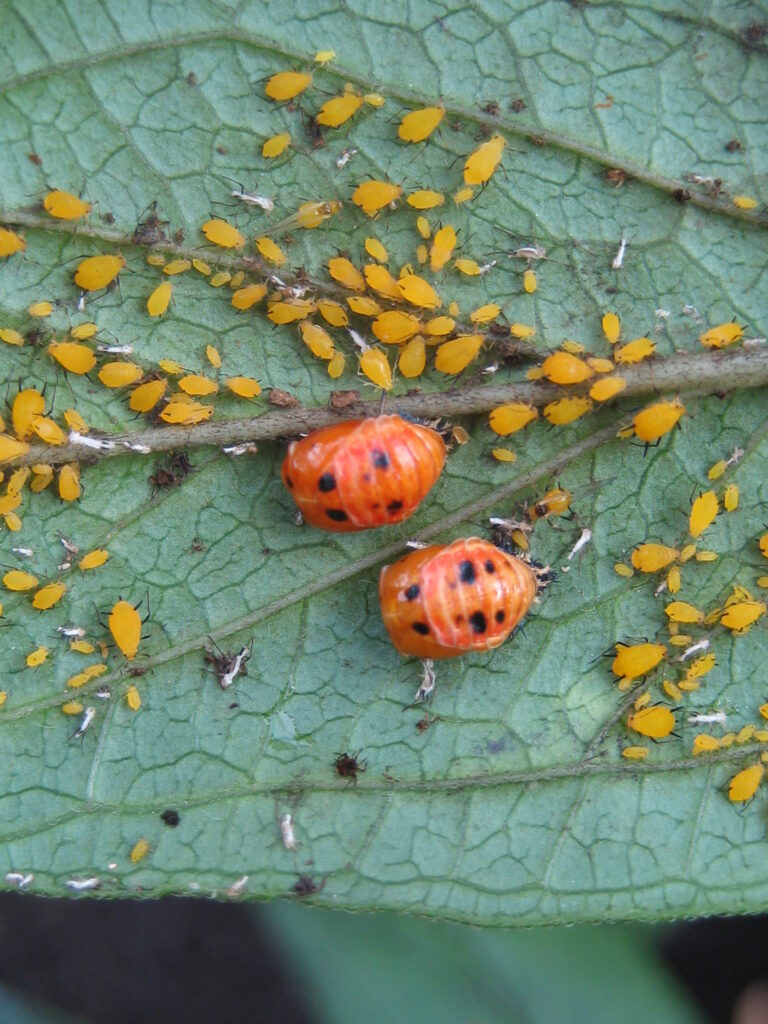
We’ve found walking sticks, praying mantids, ants, bees, flies, wasps, spiders, and specialized Milkweed bugs and beetles, all living their best lives on Milkweed.
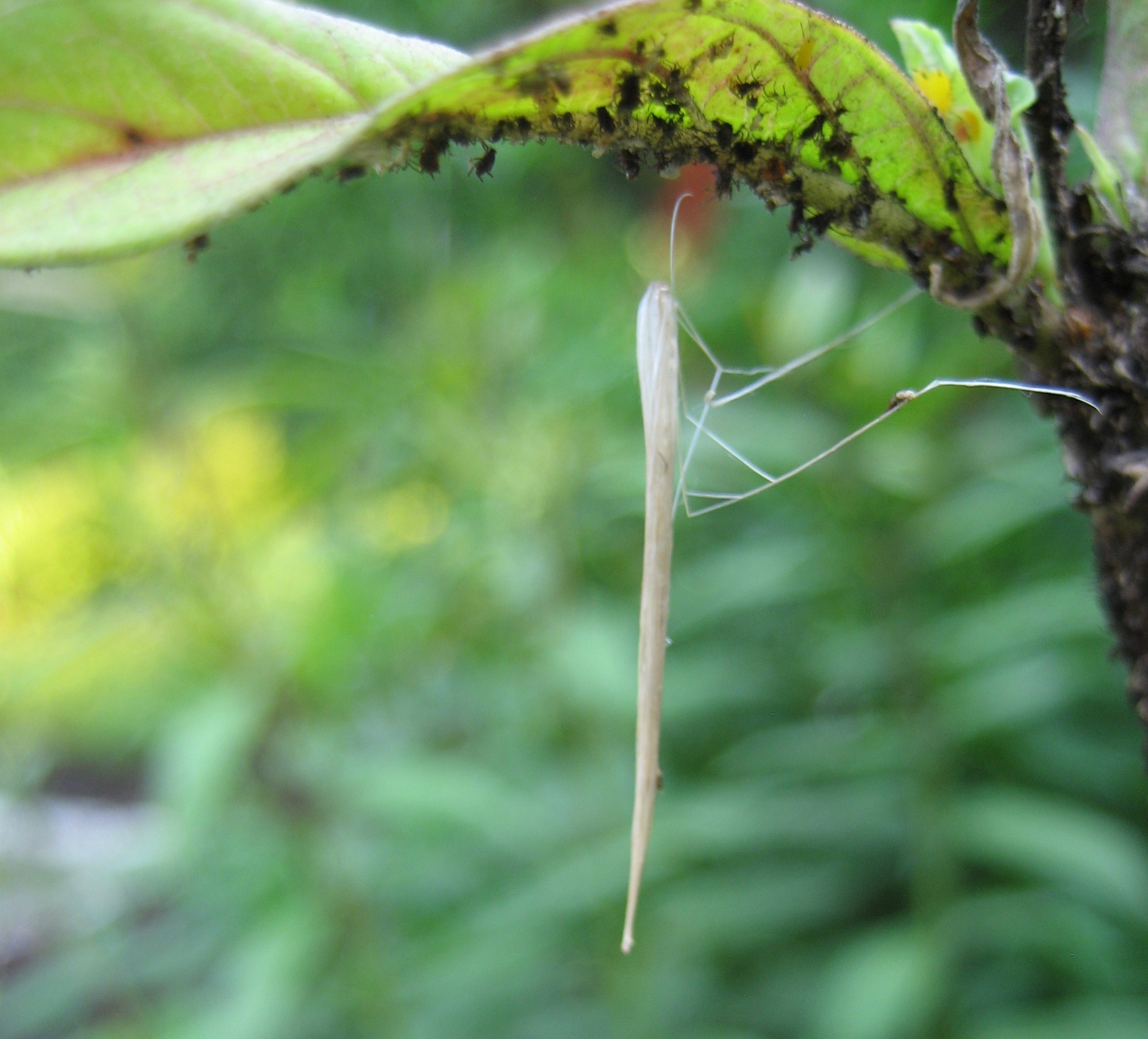
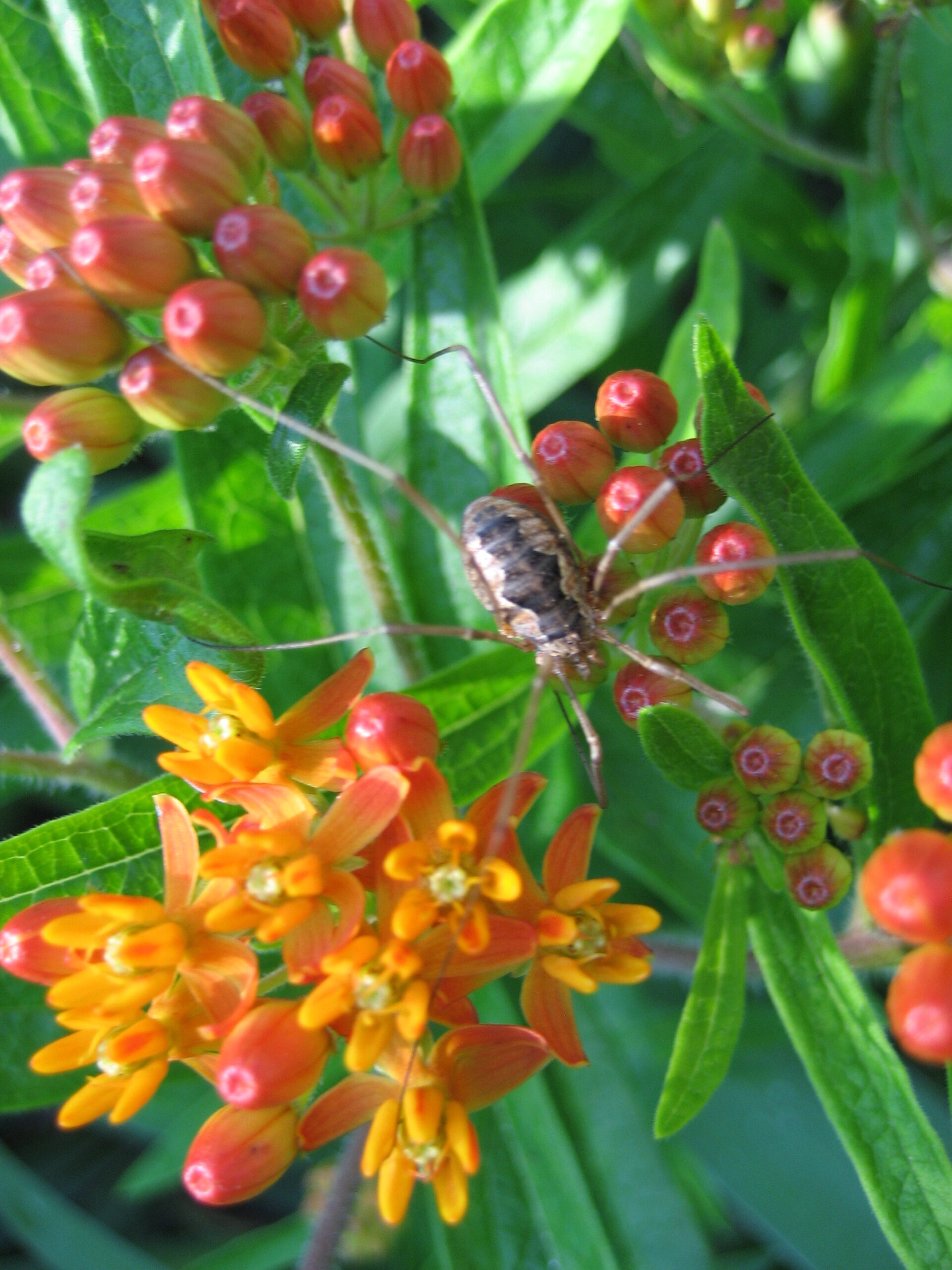
what will wander in
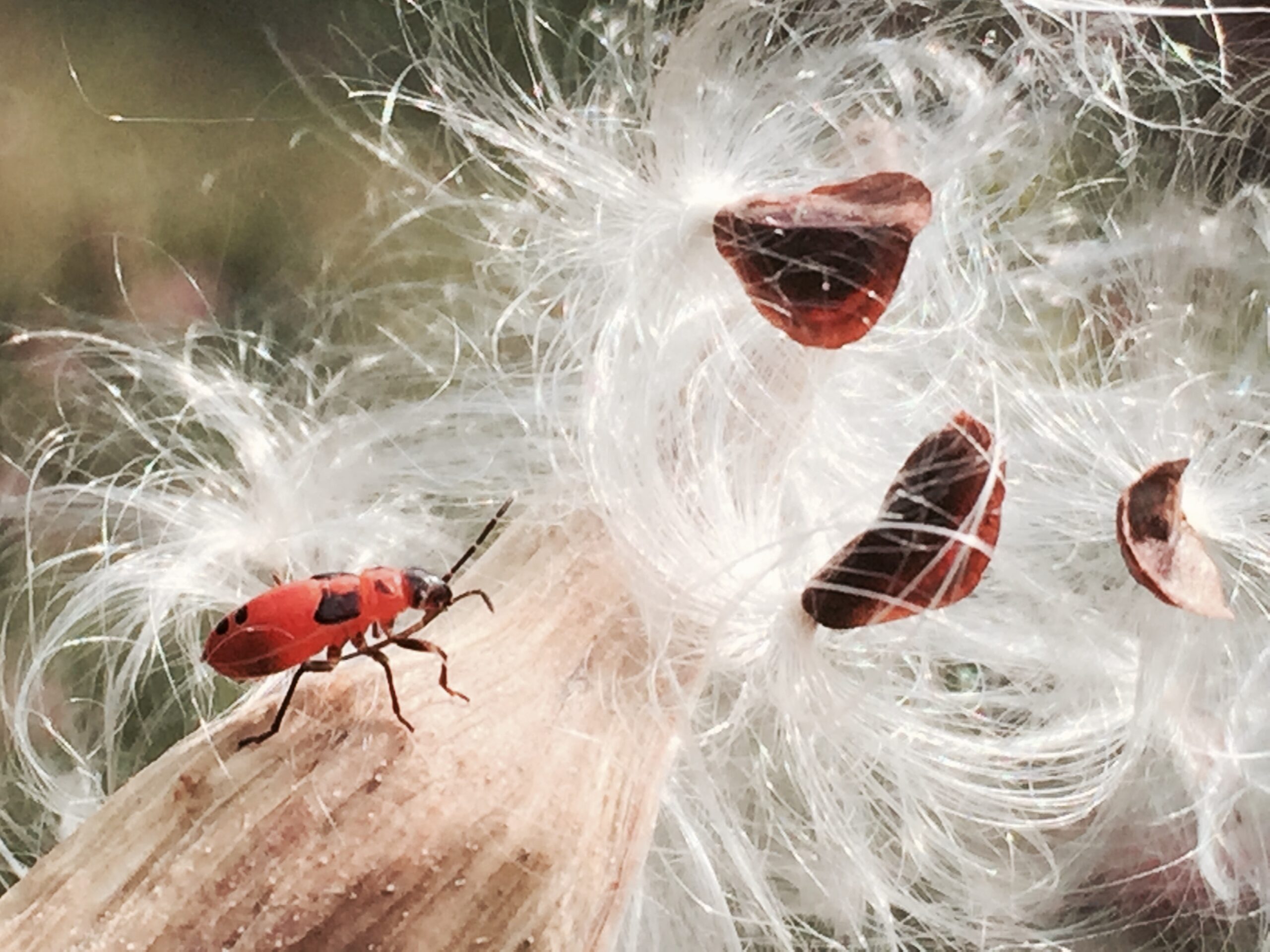
Photo: Travis Brady
Oh! Did we mention butterflies? Milkweed is loaded with nectar and draws ALL the butterflies – not just Monarchs.
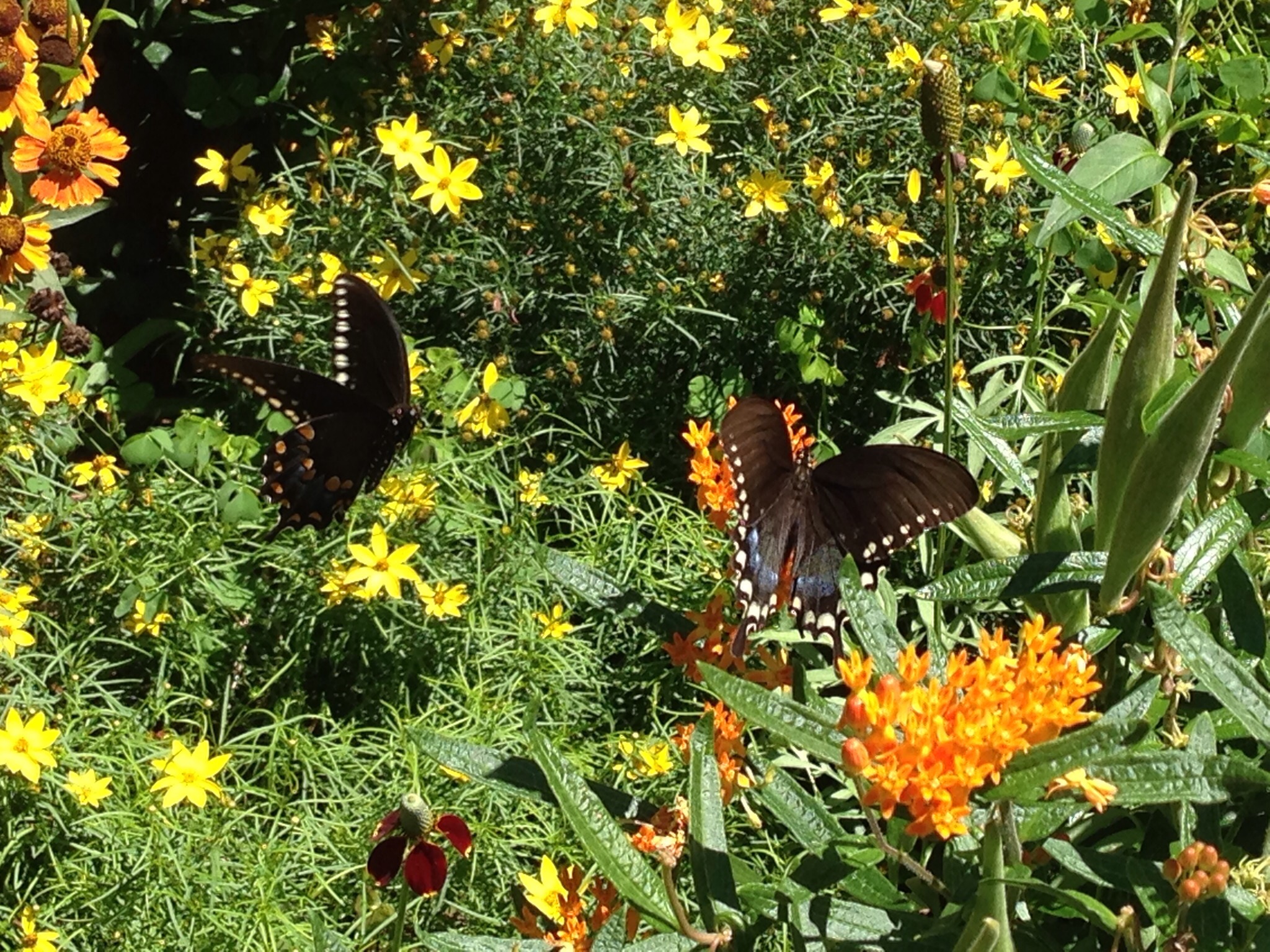
While the best Milkweed for supporting all of this life is probably Common Milkweed (Asclepias syriaca), that species is rather big, coarse, and an aggressive spreader for smaller gardens. Sadly, it’s the loss of Common Milkweed from roadsides, farmyards, and wild places all the way from Mexico to Canada that has caused the tragic decline of monarch populations.
But gardeners are making a difference, and with beautiful Milkweed species for smaller gardens, it’s really easy to do. Swamp Milkweed (Asclepias incarnata) grows 3 – 4 feet tall and blooms for months. Its lavender-pink flowers blend in with lots of other sun-loving perennials. It is perfect for pollinator gardens, meadows, and mixed borders. And it also comes in white!

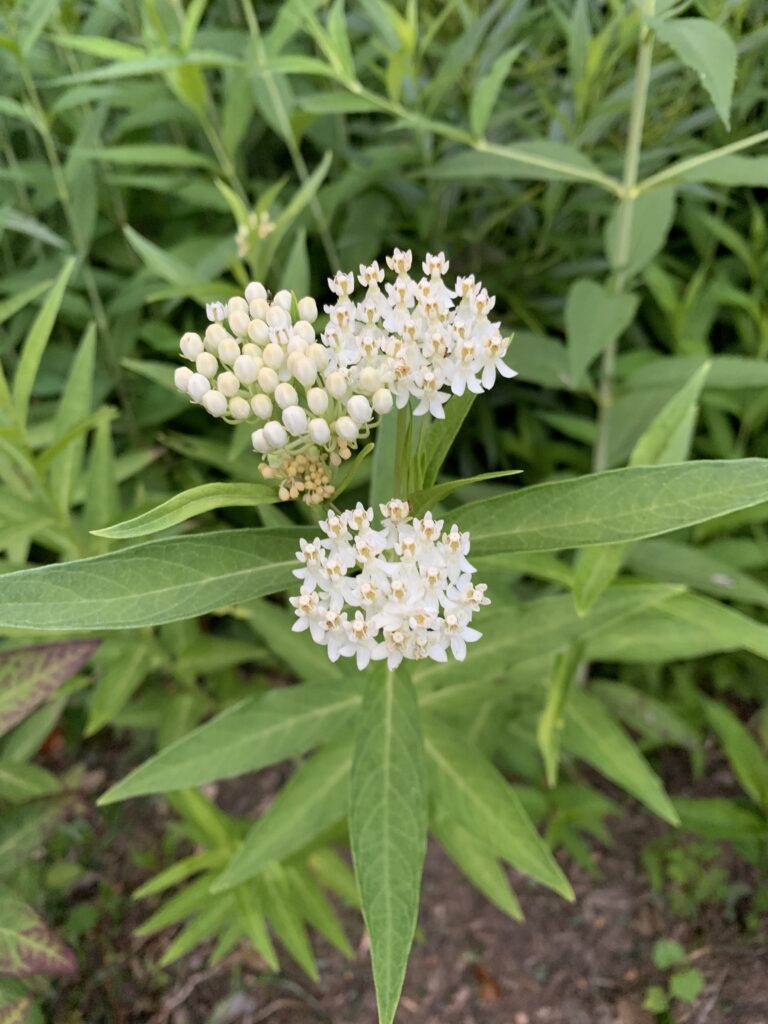
Every garden can find a place for Butterfly Weed (Asclepias tuberosa). This lovely Milkweed is a perfect front-the-border plant. It grows about 2 feet tall and is fairly compact. It stays where you plant it and is reliably hardy. The straight species is a sunny orange, and there is a bright yellow cultivar called ‘Hello Yellow.’ Butterfly Weed does best in full sun and well-drained soil. It rarely needs supplemental water, and never needs fertilizer.
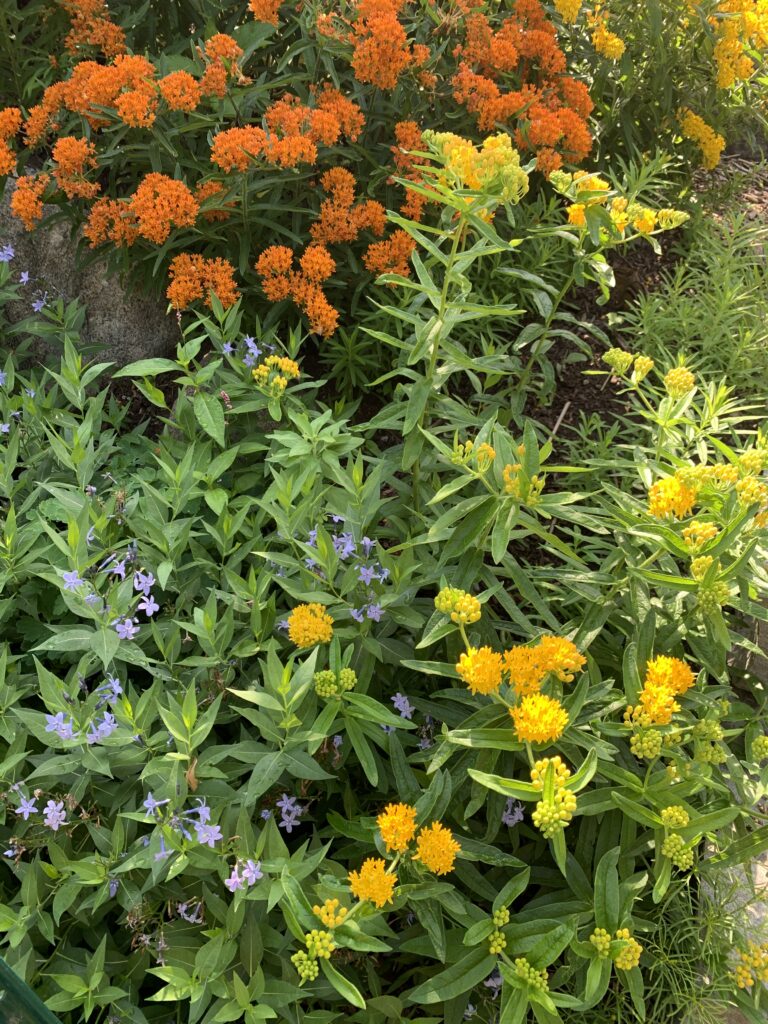
Whether or not you are planning a pollinator garden, if you love nature, be sure to add marvelous Milkweed to your spring planting list.

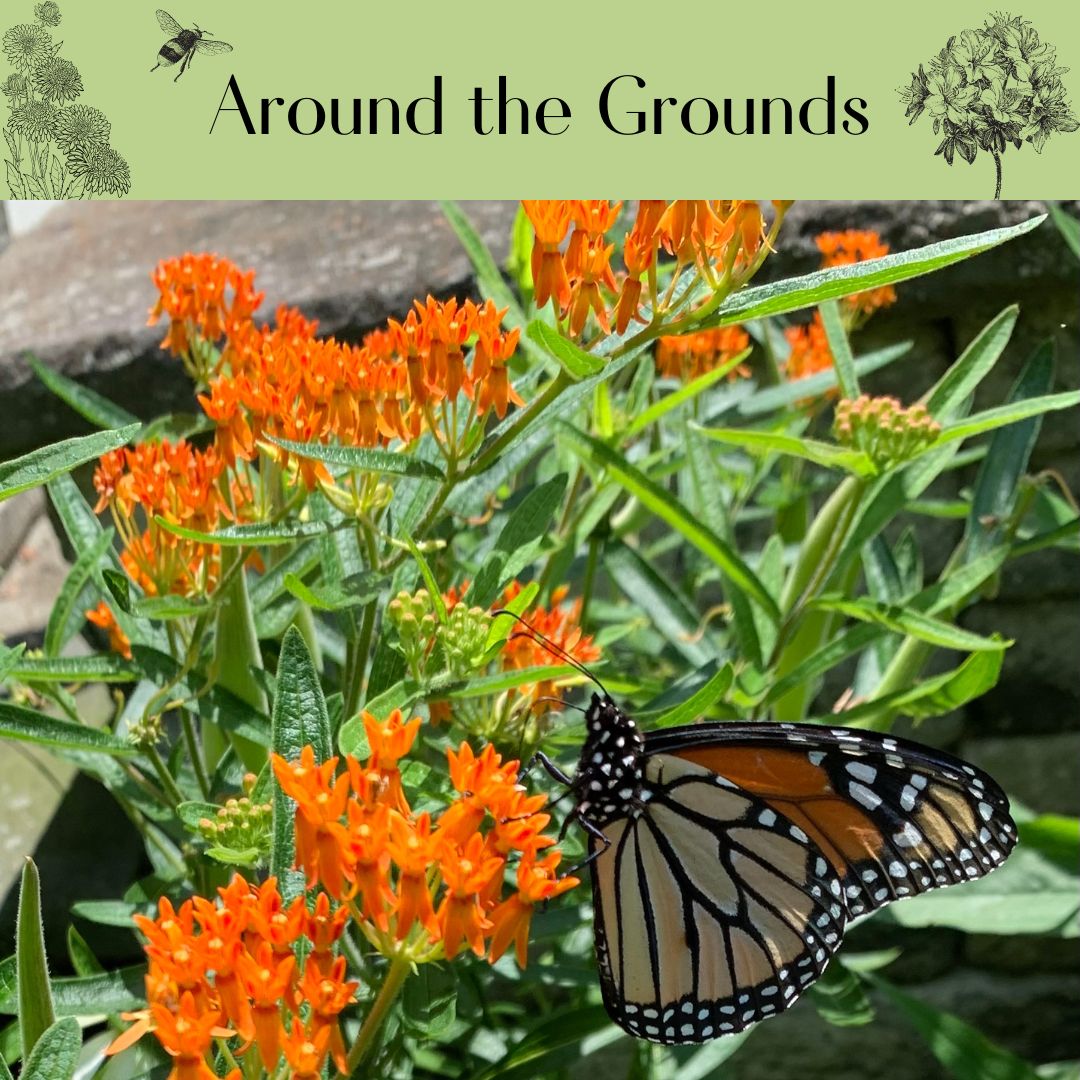
Wonderful post expanding my knowledge of milkweeds. I did not know that they were anything other than white…will look to add more varieties to our garden.
Great! You’ll definitely see more butterflies!
Lovely and informative photos!
Thank you! If you find some interesting life on your milkweed this summer, send me some photo!